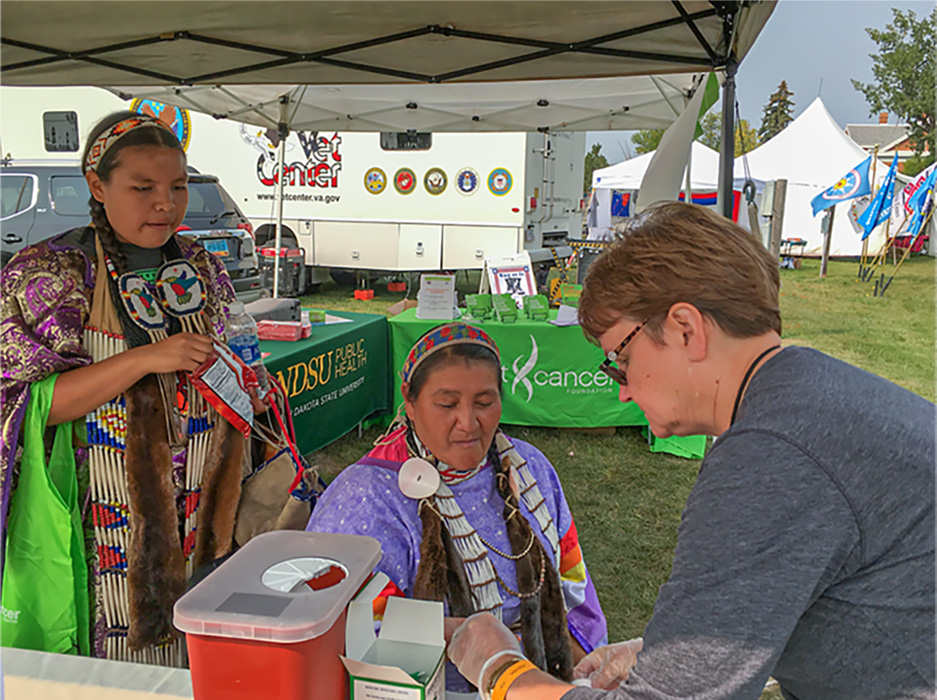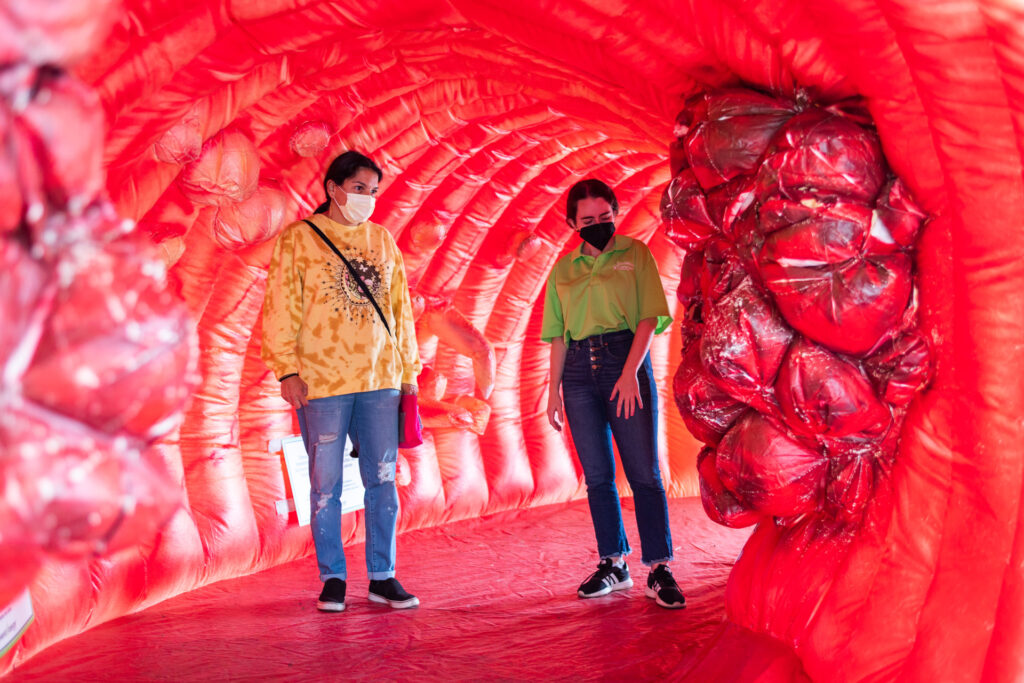
The Prevent Cancer Foundation at a health clinic in the Upper Peninsula of Michigan in partnership with the Inter-Tribal Council of Michigan.
Indigenous Peoples Day is a day to honor, celebrate and learn about the 9.7 million Indigenous, or American Indian and Alaska Native (AI/AN), identified people in the United States who have experienced unfair systemic racism and injustices for centuries. These inequities have led to negative impacts on both their mental and physical health, including higher cancer disparities compared to non-Hispanic white people.1
But what are these disparities, why do they exist and what types of initiatives are in place to improve cancer screening rates? Here are three things you might not know:
1. Cancer disparities vary greatly between regions.
Geographic location impacts cancer disparities across different tribes and regions. For example, the rates of different cancer types experienced by AI/AN individuals in the Northeast vary dramatically compared to the rates in the Southwest. While lung cancer is the most common cancer among the non-Hispanic AI/AN population in five of the six Indian Health Service (IHS) regions, in the Southwest, it is only the fourth most common cancer, after colorectal, kidney and liver.1 Most lung cancers are caused by cigarette smoking, and prevalence of cigarette smoking among AI/AN people varies by region.2 As a whole, AI/AN people have higher rates of lung, colorectal, liver, stomach and kidney cancer than non-Hispanic whites.3
2. There is a lack of centralized cancer care in AI/AN communities.
In most areas of the United States, American Indian communities lack national or state–level care for both early detection and treatment of cancer. For example, in Arizona, only two out of 22 tribes have cancer prevention and screening programs.3 The Indian Health Service (IHS) is a federal government entity that serves AI/AN people living in Purchased/Referred Care Delivery Area (PRCDA) tribal regions (also known as reservations). However, this department is underfunded and understaffed, resulting in poor quality health care, delayed screenings and support.4 Additionally, not all American Indian people live in PRCDA tribal regions. Many American Indian people are forced to travel long distances to receive care, facing transportation barriers or a lack of available cancer care facilities.3
ALSO READ | Overcoming transportation barriers to cancer screening
3. Cancer is the leading cause of mortality among AI/AN women.
Other barriers such as lack of health insurance and lower household incomes also prevent AI/AN people from accessing cancer care.1 For AI/AN women, these barriers are exacerbated, making it more difficult for them to access the necessary screening and preventive health services needed to achieve better outcomes.5 The American Indian Cancer Foundation, a former Prevent Cancer Foundation community grantee, is trying to change this by providing tailored resources for women of all screening ages, including infographics, webinars, financial resources and toolkits broken down by cancer type.
Meeting people where they are: Mobile mammography screenings
The Inter-Tribal Council of Michigan worked with their partners in rural communities to tackle the scarcity of cancer centers in rural areas by bringing cancer care to the people, helping increase cancer screenings by 20% during the outset of the COVID-19 pandemic in 2020.

The Prevent Cancer Foundation Super Colon visiting a health fair in Hannahville, Mich. in September 2021.
ALSO READ | Prevent Cancer Super Colon makes connections in Michigan
When health clinics and organizations were forced to cancel screenings in traditional health care settings, this organization mobilized a screening unit to overcome the shutdowns and alleviate transportation barriers, allowing a greater number of women to get screened for breast cancer who would not have been able to get screened otherwise. Because of their efforts, over a third of women in these communities are now caught up with their mammogram screenings.6
As the Prevent Cancer Foundation recognizes Indigenous Peoples Day, we are proud to support groups providing cancer prevention and early detection education to indigenous communities through our community grants program. Learn about more community initiatives and how the Prevent Cancer Foundation has supported community-level cancer education and screenings in states, tribes and territories.
References
- “American Indian and Alaska Native People and Cancer.” Centers for Disease Control and Prevention. 19 July 2023. cdc.gov/cancer/health-equity/groups/american-indian-alaska-native.htm#:~:text=The%20overall%20rate%20of%20getting,(294%20per%20100%2C000%20people. Accessed 20 Sept. 2023.
- “Lung Cancer Incidence in the American Indian and Alaska Native Population, United States Purchased/Referred Care Delivery Areas—2012–2016.” 2019. Centers for Disease Control and Prevention.https://www.cdc.gov/cancer/uscs/about/data-briefs/no14-lung-cancer-incidence-AIAN-PRCDA-2012-2016.htm Accessed 06 Oct. 2023.
- “New Health Center Addresses Disparities among Native Americans.” Arizona PBS. azpbs.org/horizon/2023/03/new-health-center-addresses-disparities-among-native-americans/. Accessed 29 Sept. 2023.
- “Cancer Disparities in American Indian and Alaska Native Populations.” Cancer Disparities in American Indian and Alaska Native Populations.facingourrisk.org/XRAY/cancer-disparities-in-American-Indian-and-Alaska-Native-populations. Accessed 29 Sept. 2023.
- “Reducing Cancer among Native Populations: Models for Research, Prevention, and Treatment.” The Rural Monitor. ruralhealthinfo.org/rural-monitor/cancer-among-ai-an. Accessed 20 Sept. 2023.
- “Tribal Program Increases Breast Cancer Screening Despite Pandemic.” National Breast and Cervical Cancer Early Detection Program (NBCCEDP). Centers for Disease Control and Prevention. https://www.cdc.gov/cancer/nbccedp/success/tribal-program-screening-michigan.htm. Accessed 22 Sept. 2023.
No Comments